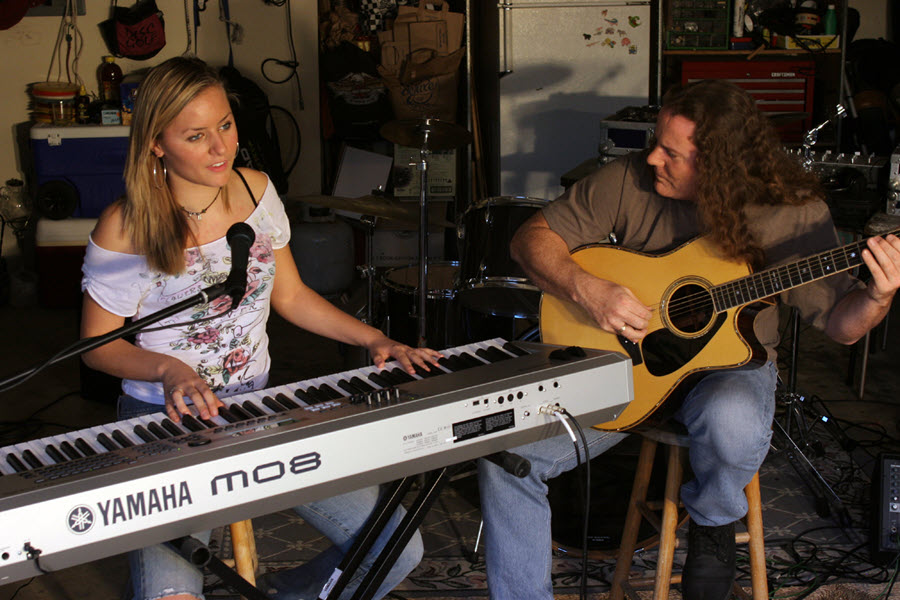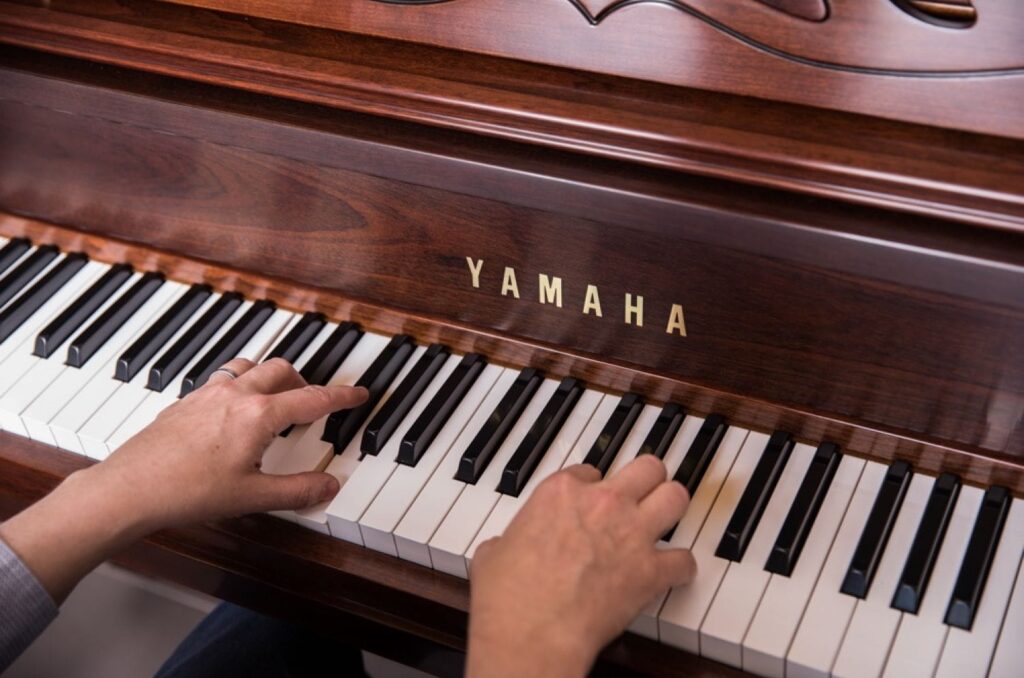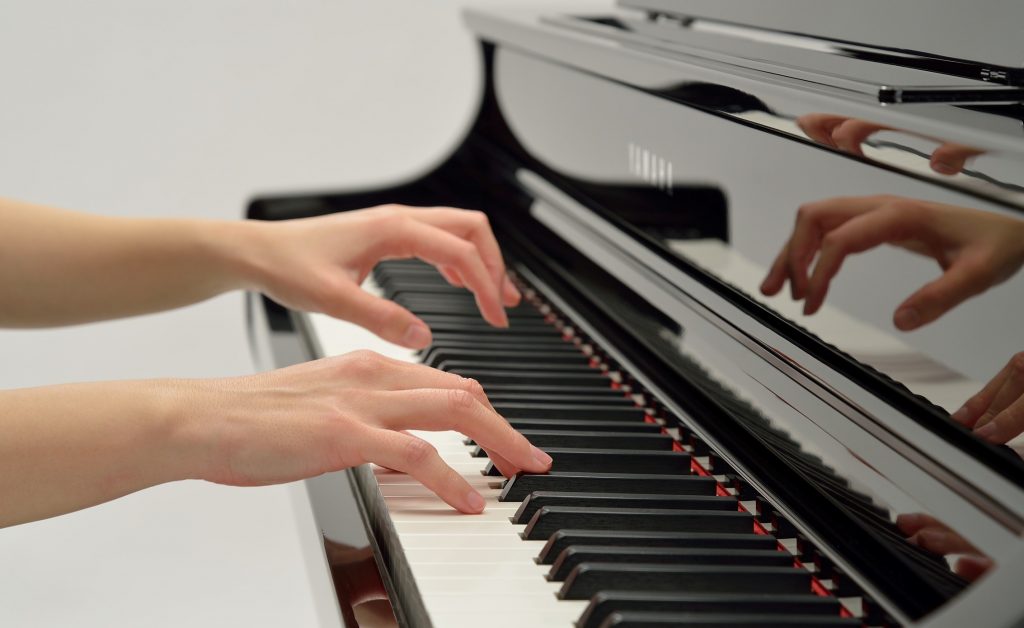Tagged Under:
Layering Digital Keyboard Sounds
Exploring the best sound combinations.
One of the great things about electronic keyboards is that you can play a wider variety of sounds than any acoustic keyboard (such as a piano) can produce, and that includes the ability to layer sounds together. Let’s explore some of the most popular blends.
Acoustic Piano With Strings
The most common addition to the sound of an acoustic piano is strings. There are a few different types of string sounds that are used; the most common is a smooth string section that doesn’t have an aggressive attack, usually named something like “Legato Strings.” The blend of the two will undoubtedly sound very familiar to you:
If you are going to be playing chords in a rhythmic fashion, you might want to opt for a string sound with a stronger (i.e., faster) and more pronounced attack; these are usually called “Marcato Strings.”
For a smooth and romantic sound, layer a softer string sound that has a slower attack and a longer release. This type of sound is generally called a “pad” because it’s especially effective when playing long sustained chords. There are actually many synth sounds that are called pads, but for the purposes of this discussion the best choice(s) in your keyboard may be called “Analog Strings” or “Pad Strings.”
Acoustic Piano with Other Sounds
Vocal sounds blend nicely with acoustic piano. Whether it is full choir sounds, pop vocals or vocal-like pads, these types of blends are fun to play and are often inspiring too.
You can also try combining acoustic piano and electric piano sounds. Choose the more traditional “tine” electric piano sound to emulate the type of blend that artists such as Bob James and Jeff Lorber favor, like this:
Or go with the FM electric piano sound invented by Yamaha, which will act like a time machine that places you firmly back in the ’80s, as exemplified by the sound of many of the hit pop ballads of the era.
It can also be very effective to blend together acoustic piano and pipe organ, especially if you play worship and praise music. If your keyboard can layer more than two sounds, consider adding some strings, brass or choir as well.
If you play gospel music, try layering piano with a tonewheel organ sound:
For powerful rock and pop music, you can’t go wrong with a blend of acoustic piano with the sound of a brass section or “sawtooth”-type synth:
Playing cool jazz or lounge music? Try layering vibes on top of your piano:
Many synth pad sounds also blend wonderfully with acoustic piano, especially when they are kept low in volume.
Electric Piano Plus
Like acoustic piano, electric piano goes well with a lot of sounds — strings and vocals, for example:
Many synth pads also work nicely with electric piano:
Some musicians like to blend mallet sounds with electric piano (especially FM piano) to accentuate the attack characteristic even more. So try marimba and/or xylophone, mixing in their level to taste.
Orchestral Blends
When you are playing orchestral music, be it classical or Broadway/theater music, layering allows you to imitate many of the most commonly used blends, such as:
Strings with Brass
Strings with Voices
Strings with Marimba/Xylophone
Strings with Bells
Strings with Woodwinds
Brass with Voices
Jazz and Big Band Blends
The most common blend used in these genres is a brass section with a sax section:
If your keyboard has a sound called “Scat Voices” or something similar, it will probably work nicely with brass or woodwind sections:
Single Note Melody Blends
If you’re playing as part of a duo or small ensemble in church and many other situations, you may be called on to just play a single-note melodic part. There are so many sounds that combine nicely when playing these types of passages. Here are just a few suggestions:
Piano and Flute
Piano and Trumpet/Muted Trumpet
Flute and Marimba/Xylophone
Muted Trumpet and Vibes
Oboe and Violin
Soprano Sax and Voices
Try Some Simple Edits
Most keyboards allow you to edit your layered sounds to some degree. They’ll almost always allow you to adjust the volume of each of the layered sounds, plus perhaps their tuning (meaning that they don’t have to necessarily be played in unison) and timbral quality. Sometimes you’ll be able to adjust the attack and/or release of the sound as well. Changing the attack allows it to “speak” right away or more slowly, and changing the release causes it to either stop cleanly when you lift your fingers from the keys, or ring out afterwards.
So you can take a Marcato String sound and, by slowing down the attack a little, you can make it more legato, or you can turn Legato Strings into a pad-type sound by making it less bright and slowing down both the attack and release. A little experimentation here is very much in order — depending upon the particular digital keyboard you are using, you might be pleasantly surprised at how much you can alter the tonality of layered sounds, giving them even greater utility.
All audio played on a Yamaha P-515, often in conjunction with sounds from Steinberg Cubase.
Check out our other Well-Rounded Keyboardist postings.
Click here for more information about Yamaha keyboard instruments.














